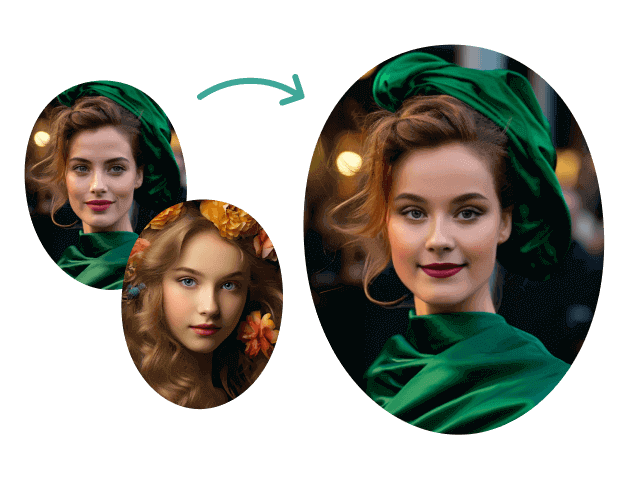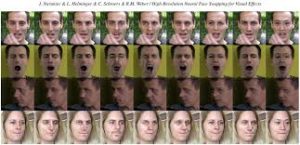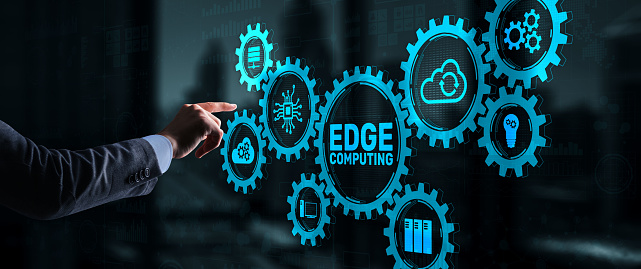5 Best Free Face Swap AI Online Platforms

Face Swap AI offers a convenient and cost-free solution to effortlessly exchange faces in images, providing a fun and creative way to explore digital transformations. I found a fantastic online tool that allows you to perform video face swaps for free, where you can swap faces online effortlessly with just a few clicks. There are several swap face free online platforms where you can swap faces in videos with ease.
Swap Face apps help you transform and switch faces in videos, providing a fun way to create unique and amusing content. With photo face swap, you can seamlessly exchange faces in pictures, creating hilarious and captivating visual transformations. Face swap online videos are an entertaining and interactive way to seamlessly exchange faces in real time, resulting in amusing and engaging visual content.
What is Face Swap AI

Face swap AI tools simplify the process of creating realistic face transformations, making it effortless for both beginners and experts. With just a few clicks, you can achieve amazing results without requiring extensive learning. Pica’s face-swapping or other popular tool provides a wide range of possibilities, allowing you to remix and transform images in imaginative ways. Whether you want to become a historical figure, take a selfie with a celebrity, or swap faces with ’90s yearbook photos, the tool offers a vast library of templates and the option to upload your photos. Face swapping goes beyond entertainment—it enables you to explore alternate realities and bring your wildest ideas to life.
Face swapping involves transferring the identity of one face onto another while preserving other details like expression, pose, lighting, and background. It presents a challenge to maintain the original attributes while changing facial features. For instance, when swapping faces with a celebrity, the goal is to retain one’s smile, angle, and surroundings while adjusting facial characteristics to resemble the celebrity. The proposed method mentioned in the description introduces a framework that utilizes style blending and the style code of StyleGAN to achieve high-fidelity face swapping by extracting and blending facial attributes in the latent space.
Face Swap AI is an artificial intelligence-based technology that allows for the swapping of faces in images or videos. It utilizes deep learning algorithms, such as convolutional neural networks (CNNs) and generative adversarial networks (GANs), to analyze and manipulate facial features.
Is the Face Swap AI app safe?
AI face swap applications can present certain risks and concerns related to privacy. Users may unknowingly share images or videos of themselves or others without obtaining proper consent, which can raise privacy issues.
AI face-swapping technology, although entertaining, does indeed have the potential to contribute to the spread of misinformation and fake news. The ability to convincingly swap faces in images or videos can be misused to create deceptive content that appears authentic. This can lead to the dissemination of false information, manipulation of public opinion, or even the creation of harmful content, such as non-consensual explicit material or malicious impersonation. Therefore, it is crucial to be mindful of the ethical implications and potential risks associated with the misuse of AI face-swapping technology.
The process typically involves the following steps:
- Face Detection: The AI system detects and localizes faces in the input image or video.
- Facial Landmark Detection: The system identifies key facial landmarks, such as the eyes, nose, and mouth, on the detected faces. These landmarks serve as reference points for accurate face alignment.
- Face Alignment: The system aligns the source face (the face to be swapped) and the target face (the face to be replaced) based on the detected facial landmarks. This step ensures that the faces are properly positioned for swapping.
- Feature Extraction: The AI model extracts facial features from both the source and target faces. These features include the shape, texture, and color information of various facial components.
- Face Warping: The system warps the source face to match the shape and structure of the target face by applying geometric and texture transformations. This step ensures that the swapped face aligns seamlessly with the target face.
- Texture Blending: The AI algorithm blends the warped source face with the target face, taking into account factors such as lighting conditions, shadows, and skin tones. This process ensures a smooth transition between the swapped face and the surrounding context.
- Post-Processing: Additional adjustments may be applied to refine the swapped face, such as color correction, smoothing, or sharpening, to enhance the overall visual quality.
( 3) AI Face Swap AI Free to Use

There are several AI face swap tools available for beginners that offer free options. Here are a few popular ones:
- DeepFaceLab: DeepFaceLab is a comprehensive face-swapping software that utilizes deep learning algorithms. It provides both a user-friendly interface and advanced features suitable for beginners. It is an open-source project and can be downloaded for free.
- Faceswap: Faceswap is another popular AI-based face-swapping tool. It offers a user-friendly interface and provides various options for swapping faces in images and videos. Faceswap is open-source software that can be downloaded and used for free.
- Reface: Reface is a mobile app that allows users to replace faces in videos and GIFs with popular faces such as celebrities and movie characters. It offers a simple and intuitive interface, making it easy for beginners to create face swaps. While Reface does offer a free version, it also provides a premium subscription for accessing additional features and content.
When using any AI face swap tool, it’s important to respect privacy and ethical guidelines and ensure that you have the necessary permissions when manipulating or sharing images or videos.
How do I get the best result with Faceswap AI Online Tools?

The Face Swap AI online platform offers a convenient way to swap faces in your images. Simply upload your pictures and click the swap button to witness the amazing results. Prepare yourself for a fun-filled experience with Face Swapper Online! Our app allows you to swap faces, unleash your creativity, and bring joy to your friends and family. Join us now for an exciting time together!
To achieve the best face swap AI outcome, it is important to ensure that your images are of high quality and free from visual disturbances like noise. Moreover, make sure that the subjects in the photos are not wearing any facial coverings, such as masks, as this can affect the accuracy of the swap. For optimal results, please upload high-quality photos to ensure the final output is of the highest standard.
What is the difference between a deep fake and a face swap?
Deepfake and Face Swap AI are both techniques that involve manipulating and altering facial images, but they differ in their approaches and applications.
Deepfake:
Deepfake refers to the use of deep learning algorithms and artificial intelligence to create realistic and convincing fake videos or images. Deepfake technology can manipulate and superimpose one person’s face onto another person’s body, creating highly realistic and often deceptive content. It has gained attention for its potential misuse in spreading misinformation, fake news, and malicious activities.
FaceSwap AI:
FaceSwap AI, on the other hand, is a more specific application of deepfake technology that focuses on swapping faces between two individuals in images or videos. The goal of FaceSwap AI is to seamlessly replace the face of one person with the face of another while maintaining natural facial expressions, movements, and lighting conditions. FaceSwap AI is often used for entertainment purposes, such as creating humorous videos or swapping faces in photos.
In summary, deepfake is a broader term that encompasses various techniques for creating realistic fake content using AI, while FaceSwap AI is a specific application of deepfake technology that focuses on swapping faces between individuals in images or videos.
What are some other applications of deepfake technology besides FaceSwap AI?
Besides face swap AI, deepfake technology has various other applications. Some of these include:
- Entertainment and Social Media: Deepfake technology is used in the entertainment industry for creating realistic CGI characters, altering actors’ appearances, and enhancing visual effects in movies. It is also utilized in social media platforms for creating fun and interactive filters, augmented reality experiences, and personalized avatars.
- Impersonation and Satire: Deepfake technology can be used for impersonation purposes, such as creating videos or audio clips of individuals appearing to say or do things they never actually did. This can be used for satirical purposes, political commentary, or entertainment.
- Voice Synthesis: Deepfake technology can generate synthetic voices that closely resemble a specific person’s voice. This has applications in voice-overs for movies, audiobooks, and virtual assistants.
- Education and Training: Deepfake technology can be utilized in educational settings to create realistic simulations and training scenarios. For example, medical students can practice surgical procedures on virtual patients, or law enforcement professionals can undergo virtual training scenarios.
- Historical and Cultural Preservation: Deepfake technology can be used to recreate or restore historical figures or cultural artifacts. It can bring historical events to life by animating old photographs or paintings, allowing people to experience history in a more immersive way.
Unfortunately, Face Swap AI and similar deepfake technologies have been misused in various ways. Here are some examples:
- Non-consensual pornography: Deepfake technology has been used to create explicit videos or images by superimposing someone’s face onto adult content without their consent. This can lead to serious harm, including reputational damage and emotional distress.
- Fake news and misinformation: Deepfakes can be employed to create misleading videos or speeches, making it appear as if a public figure said or did something they never actually did. This can contribute to the spread of false information and manipulation of public opinion.
- Fraud and scams: Deepfakes can be used to impersonate individuals, such as company executives or family members, to deceive others for financial gain. This can involve manipulating audio or video recordings to convince victims to take certain actions or provide sensitive information.
- Political manipulation: Deepfake technology has the potential to be used in political campaigns to create fabricated videos or speeches, spread false information, or damage a candidate’s reputation.
- Social engineering and phishing: Deepfakes can be employed in targeted attacks, where individuals are tricked into believing they are interacting with a trusted person or entity, leading to the disclosure of personal information or the execution of malicious actions.
Tips on how to identify deepfake videos or face-swapping AI images?
Certainly! Here are some tips to help identify potential deep-fake videos or face swap AI images:
1. Pay attention to visual anomalies.
Look for any unnatural or inconsistent elements in the video or image, such as blurry edges, mismatched lighting, or distortions around the face. Deepfakes may exhibit subtle visual artifacts or glitches that are not present in authentic content.
2. Observe facial expressions and movements.
Deepfakes may display unusual or exaggerated facial expressions, odd eye movements, or unnatural head positions. Pay close attention to these details, as they can be indicators of manipulated content.
3. Assess lip-syncing and audio quality.
In deepfake videos, there may be discrepancies between the audio and the movements of the lips. If the lip movements do not precisely match the spoken words or if the audio quality seems inconsistent with the video, it could be a sign of manipulation.
4. Verify the source and context.
Be cautious of videos or images that are shared without proper context or from unreliable sources. Deepfakes are often spread to deceive or mislead, so verifying the credibility and authenticity of the source is crucial.
5. Seek multiple sources and perspectives.
If a video or image is controversial or seems suspicious, try to find multiple sources or viewpoints to corroborate the information. Independent verification from reputable sources can help uncover potential deepfakes.
6. Stay informed about the latest developments.
Deepfake technologies are continuously evolving, and new detection techniques are being developed. Stay updated on advancements in deepfake detection tools and techniques to better identify manipulated content.
What are some common deepfake or face swap AI detection tools that experts use to analyze videos and images?
Experts and researchers use a variety of deepfake detection tools and techniques to analyze videos and images for signs of manipulation. Here are some common approaches:
1. Forensic Analysis:
Experts employ digital forensics techniques to examine the video or image for inconsistencies, artifacts, and traces of tampering. This involves analyzing metadata, examining image compression, and studying the file’s integrity to detect signs of manipulation.
2. Facial and Body Movement Analysis:
Deepfake detection tools analyze the facial and body movements in a video to identify any unnatural or inconsistent behavior. This can involve tracking facial landmarks, analyzing eye movements, or assessing body posture to detect anomalies that may indicate a deepfake.
3. Deep Learning Algorithms:
Since deepfakes are created using deep learning algorithms, researchers also develop deepfake detection models that leverage similar techniques. These models are trained on large datasets of real and manipulated content to learn patterns and identify features that distinguish between authentic and manipulated videos or images.
4. Image and Video Forensics Software:
Specialized software tools, such as Adobe’s Content Authenticity Initiative or Amber Authenticate, employ advanced algorithms to assess the authenticity of media content. These tools analyze various factors, including metadata, compression patterns, and noise inconsistencies, to identify potential signs of manipulation.
5. Reverse Engineering Techniques:
Experts may use reverse engineering techniques to understand the deepfake creation process. By studying the characteristics of different deepfake generation methods, researchers can develop countermeasures and detection methods that exploit specific weaknesses in deepfake algorithms.
How to use AI face-swapping tools
Face swap AI tools can be fun and creative, but it’s essential to use them ethically and with the consent of those involved. If you decide to use AI face swap tools, here are some guidelines:
1. Respect privacy and consent.
Ensure that you have permission from the individuals whose faces you are swapping. Respect their privacy and avoid using the tool to create or share content that may be embarrassing, harmful, or deceptive.
2. Use reliable and reputable tools.
Choose face swap AI tools from trusted sources. Research and read reviews about the tool before using it to ensure its credibility and legitimacy. Be cautious of tools that may violate privacy or misuse data.
3. Be mindful of the context.
Consider the implications and potential consequences of using AI face swap in a particular context. Avoid using it for malicious purposes, such as spreading misinformation or creating fake content.
4. Maintain transparency:
If you plan to share the AI face swap content, make it clear to viewers that it is a manipulated image or video. Transparency helps prevent the spread of misinformation or confusion.
5. Limit sharing and distribution.
Be mindful of where and how you share the AI face swap content. Avoid sharing it in a way that could mislead or deceive others, and be respectful of the preferences and concerns of the individuals involved.
Recap:
Face Swap AI is a functionality that permits users to exchange their facial features with those of celebrities, characters, or other individuals. By uploading personal photos or videos and selecting the desired face to swap with, the face swap platform uses sophisticated generative AI techniques to seamlessly blend the faces, resulting in a realistic and compelling video output.
Face swap AI tools can be entertaining and creative, allowing users to manipulate and swap faces in images or videos. However, it is crucial to use such tools responsibly and ethically. Respecting privacy, obtaining consent, and being mindful of the potential consequences are essential considerations when using AI face swap technology.
By following these guidelines, users can ensure that AI face swap tools are used respectfully and responsibly. It is important to remember that technology should not be misused to deceive, harm, or violate the rights of others. Responsible use of AI face swap tools contributes to a positive and ethical digital environment.




